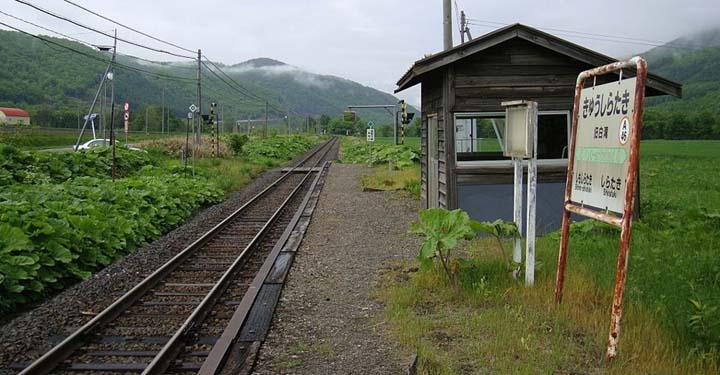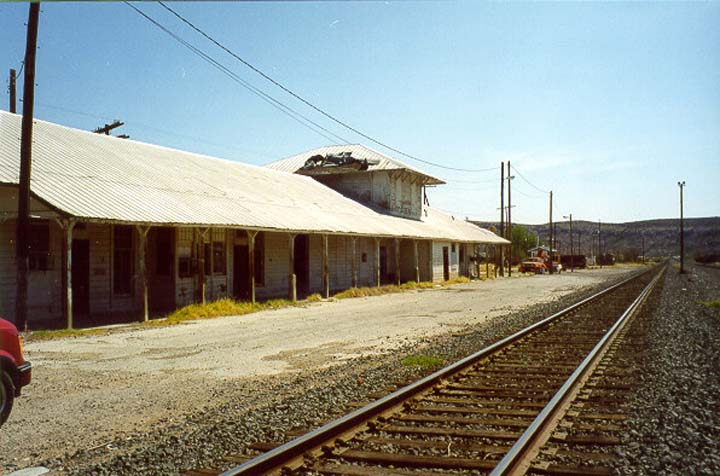In recent movies they show airports, but in old movies they showed railroad stations in New York, Chicago,
Los Angeles, London or Paris, that were bustling with crowds of people.
But consider Shinjuku Station in Tokyo handles 3.6 million passengers every single day, or 1.3 billion riders
a year, so in some spots railroads thrive.
But even Japan has some lonely stations. Kyu-shirataki station closed in March, when the only daily passenger
for the last few years graduated from High School.
This is Kyu-shirataki.

Here in the US the railroad barons made fortunes, especially moving war materiels and troops. Rather than
plowing those profits back into the equipment and better passenger service they kept the money, feeling
secure in their continued dominance. Then the Interstate Highway System, America’s Autobahn, burst their
bubble when trucking became cheaper with better service. Amtrak was formed by the government to take
over passenger service but it’s mostly used around the big cites so it has some lonely stations.
1-Sanderson, Texas, with 238 boardings and alightings
2-Thurmond, West Virginia, had 295 boardings and alightings
3-Alderson, West Virginia, had 432 boardings and alightings
This is Sanderson

It seems England has a lot of lonely stations with yearly passenger counts of...
1-Shippea Hill (Cambridgeshire) – 12
2-Reddish South (Greater Manchester) – 38
3-Pilning (Gloucestershire) – 46
4-Coombe Junction Halt (Cornwall) – 48
5-Barry Links (Angus) – 68
6-Denton (Greater Manchester) – 74
7-Stanlow & Thornton (Cheshire) – 88
8-Teesside Airport (County Durham) – 98
9-Chapelton (Devon) – 100
10-Clifton (Greater Manchester) – 116
This is Shippea Hill.

Why would they keep the trains running for so few people? History.
Quote:
With so few passengers, why do these British trains even bother to run? Because, ironically, it’s cheaper
to keep the line open than to close it. Closing down a line is a long-winding bureaucratic process that
involves costly consultation, government approval and the inevitable public protest. So many train
operators keep running empty trains to avoid the costs and political fallout, and to maintain the pretense
that the service has not been withdrawn. These trains are officially known as "parliamentary trains".
The name comes from an archaic Act of Parliament passed in 1844 that required train operators to provide
inexpensive and basic railway travel for less affluent passengers. While the law no longer holds, the
pressure to keep the line operational still remains.
Often, these ghost trains run at inconvenient times like very early in the morning, or very late at night,
or in the middle of the day at the weekend, so as to have no passengers.
On a positive side, ghost trains keep the hope alive that the line may become more regular again in the
future. Once a service is closed entirely, infrastructure deteriorates and the decay becomes irreversible.
Keeping trains running, even if it’s empty, helps maintain the infrastructure.
|
I think that’s a good thing, use it or lose it.
 link
link